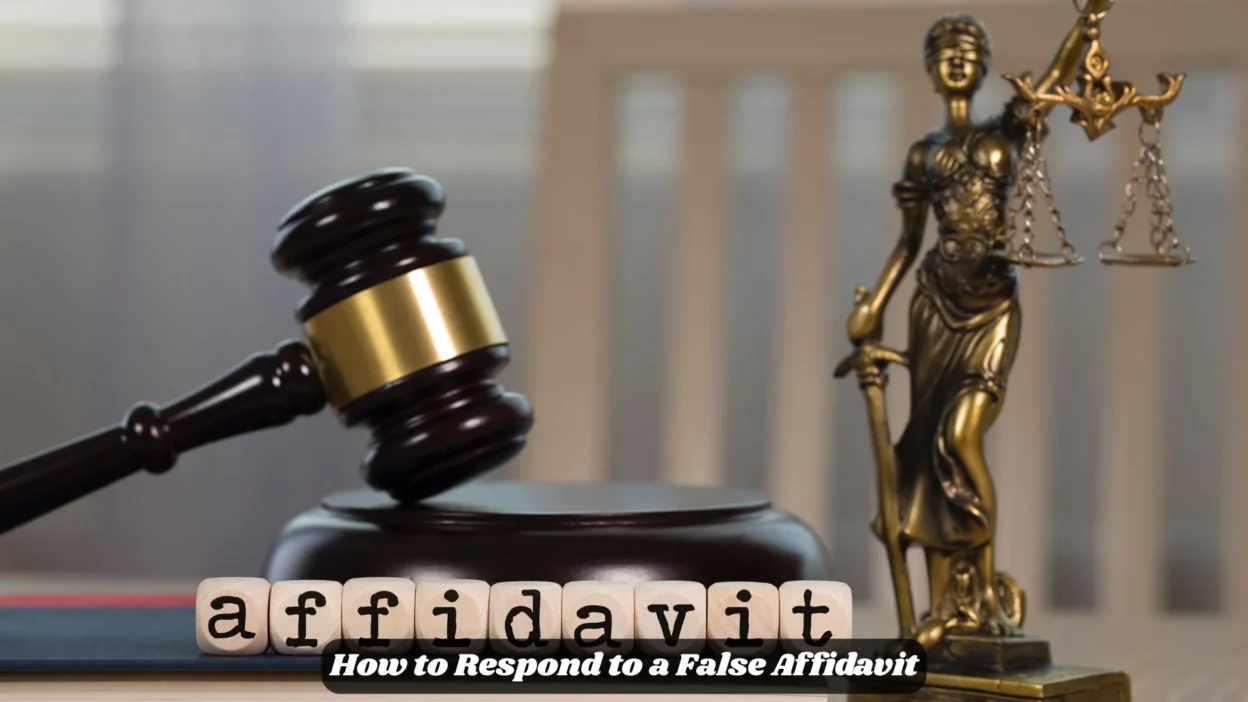You’re looking for a better way to say how to respond to a false affidavit. Maybe you’re drafting a reply, writing an email, or having a conversation.
You need something that sounds right for the moment—sharp, clear, and suited to the tone. This article is the shortcut you’ve been searching for.
Whether you’re in a courtroom, an office, or just telling someone your side of the story, we’ve got you covered.
Different situations need different ways to say how to respond to a false affidavit. Legal settings call for precise language.
Casual talks with friends might need a softer touch. Sometimes you want to use an idiom to make your point hit home. And if you’re in a work meeting,
you’ll want to sound both professional and calm. Here’s your full guide, organized by tone and use.
Sorry Generator
Formal Ways to Say How to Respond to a False Affidavit
Use these phrases in legal documents, official reports, or formal writing:
- Refute the erroneous statement under oath
- Submit a counter-affidavit
- Provide a legal rebuttal
- Deny the sworn misrepresentation
- Challenge the sworn falsehood
- Issue a formal denial
- File a response in court
- Contest the affidavit’s claims
- Dispute the allegations in writing
- Address the affidavit via legal counsel
- Submit a declaration of truth
- Offer a sworn statement of facts
- Reject the affidavit’s assertions
- Respond through legal representation
- Invalidate the incorrect affidavit
- Rebut the claim with evidence
- Present a legal contradiction
- Counter the false deposition
- Demand a legal correction
- Invoke right of reply under oath
- Raise formal objections
- Assert factual opposition
- Clarify the record with affidavits
- Issue a statement of denial
- Enter a formal response
- Present a truth-based affidavit
- Seek judicial review of affidavit
- Challenge testimony legally
- Confirm inaccuracies in legal terms
- Rectify the misrepresented facts
Informal Ways to Say How to Respond to a False Affidavit
These work well in everyday conversations or when explaining things simply:
- Set the record straight
- Speak up against it
- Tell your side of the story
- Push back on the lie
- Let the truth come out
- Tell what really happened
- Say it’s not true
- Call it out
- Show the truth
- Share your version
- Respond honestly
- Say what’s real
- Say they’re wrong
- Prove it false
- Show the facts
- Tell the real story
- Point out the lie
- Clear your name
- Talk back with facts
- Correct the mistake
- Let people know the truth
- Explain what really went on
- Push back with proof
- Bring out the truth
- Say they’re not right
- Tell it like it is
- Tell the truth loud and clear
- Stand up for yourself
- Put out your own version
- Respond with your story
Idiomatic Ways to Say How to Respond to a False Affidavit
These expressions add color and personality. Great for speeches, blogs, or opinion pieces:
- Set the record straight
- Fight fire with fire
- Call a spade a spade
- Nip it in the bud
- Shoot it down
- Go to bat for yourself
- Stick to your guns
- Spill the beans
- Tell it like it is
- Air your side of the story
- Throw down the gauntlet
- Put your cards on the table
- Hit back with the truth
- Pull back the curtain
- Give them a taste of their own medicine
- Speak your piece
- Let the chips fall where they may
- Keep it real
- Rock the boat
- Blow the whistle
- Put your foot down
- Take the gloves off
- Face the music
- Expose the smoke and mirrors
- Break the silence
- Fire back
- Lay it on the line
- Go on record
- Call them out
- Lift the veil
Professional Ways to Say How to Respond to a False Affidavit
Use these in meetings, professional emails, or formal workplace discussions:
- Address the inaccuracy in writing
- Submit a formal correction
- Clarify the record with facts
- Respond through appropriate legal channels
- Provide documentation to support the truth
- Challenge the claim respectfully
- Correct the misinformation professionally
- Issue a written response
- Request a review of the statement
- Seek clarification from involved parties
- Present verified facts
- Raise concerns about the affidavit’s validity
- Offer a factual counterstatement
- Communicate the discrepancy with proof
- Follow proper protocol for dispute
- Escalate the issue to legal counsel
- Defend your position with evidence
- Respond promptly with clear facts
- Address the issue in line with company policy
- File an internal report
- Document your side of the story
- Provide a statement for the record
- Ensure transparency with your response
- Initiate a formal dispute
- Report the falsehood professionally
- Align your response with company standards
- Take appropriate legal action
- Clarify false claims in writing
- Maintain professionalism in your rebuttal
- Speak to HR or legal as needed
Conclusion
Choosing the right way to say how to respond to a false affidavit helps you sound confident, clear, and appropriate for the setting. Whether you’re in court, chatting with friends, writing a blog, or sitting in a boardroom, language shapes how your truth is heard. Practice using these phrases. Over time, it will feel natural to pick the one that fits best.

James Smith is an acclaimed fiction writer and storyteller whose work explores the human condition through a lens of emotional depth and sharp observation. Known for his captivating prose and unforgettable characters, James has carved a unique space in contemporary literature.
With a background in English Literature and over a decade of writing experience, his stories have been featured in numerous literary magazines and anthologies. James is passionate about mentoring emerging writers and frequently speaks at literary events and creative writing workshops.
Selected Works:
-
Beneath the Quiet Sky
-
The Echoes We Leave Behind
-
Fragments of a Forgotten Summer




